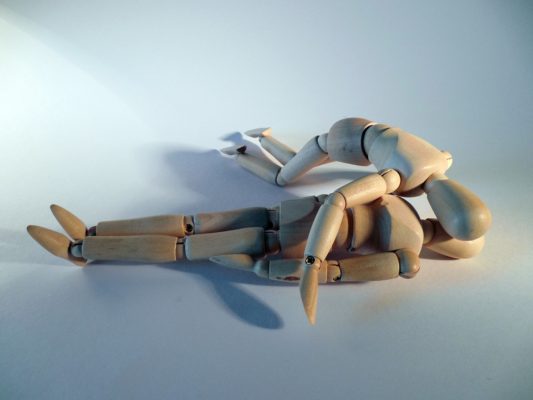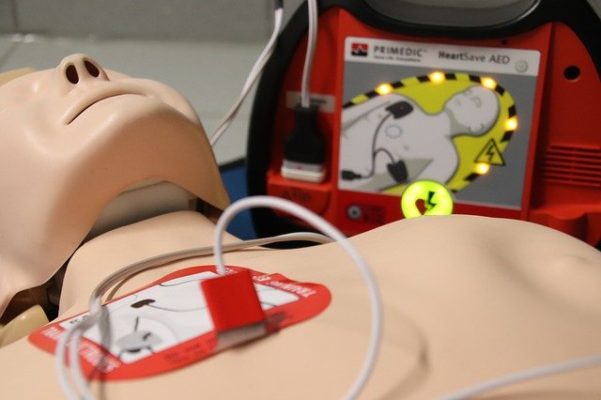You never know when you might come across an emergency. They can happen when walking down the street, when at home with your family or whilst at work. Being prepared with some basic knowledge of what to do can keep your family and colleagues safe. If you have been following our series, hopefully, you will know how to assess a casualty and deal with some common emergencies like choking and bleeding. Sometimes, however, the situation becomes more critical.
While having a person not responding and not breathing in your care is scary if you follow these steps you can be involved in keeping someone alive long enough to get professional help. Here’s everything you need to know about basic life support and CPR.
Basic Life Support
Basic Life Support (BLS) is the principle of assessing a casualty, establishing that they are not responding and not breathing and then performing cardiopulmonary resuscitation (CPR) on them to keep them alive until an ambulance arrives. It is incredibly simple but in the moment can be confusing and flustering so if you find yourself in a situation where you need to use it, take a deep breath and a second to compose yourself before you jump in.

Assessing a Casualty
This uses the DRABC technique discussed in our article here. To recap, check for Danger such as trip hazards and fire, then try to get a Response from the casualty by shouting and gently shaking them. Once you’ve seen whether they are responding or not, get a response from those around you by shouting for help and calling 999.
Open the casualty’s Airway by performing a head tilt-chin lift as discussed in the article here and check if they are Breathing by looking for chest movement, listening for breath sounds and feeling their breath on your cheek.
If they are not responding and not breathing, it is safe to assume their heart is not beating or soon won’t be – in medical terms, the casualty is in Cardiac Arrest.
Performing CPR
CPR is a mix of chest compressions to pump the heart, and rescue breaths (commonly known as mouth-to-mouth or the kiss of life) to get oxygen into the casualty’s lungs. Unlike what is seen on TV, CPR does not magically bring people back from cardiac arrest but buys them time for when a defibrillator arrives.
Many public places, including offices and places of work, are fitted with Automatic External Defibrillators (AEDs) which can be used by any member of the public without any training. If you see a casualty who is not responding and not breathing, call for a colleague to get an AED as this is the only method of actually resuscitating people from a cardiac arrest.
CPR is performed by giving 30 chest compressions followed by 2 rescue breaths. This should be repeated continuously until an AED arrives or until the paramedics take over. CPR can be tiring so if possible, switch with a colleague every 2 minutes.

Chest Compression
- Ensure help is on its way by calling for an AED and checking someone has rung 999.
- Kneel at the side of the casualty, at the level of the chest.
- Place the heel of your hand in the centre of the chest, on the breastbone of the casualty at the level of the nipple.
- Kneel over the casualty so there is a straight line between their breastbone, your elbow, and your shoulder, this will allow you to get your full body weight on the chest to prevent fatigue.
- Quickly and firmly press about 6cm into the chest and release fully but do not lose contact with the chest.
- Administer compressions at a rate of approximately 2 a second. People commonly remember the rate using songs like Nelly the Elephant or Staying Alive by the BeeGees.
- Give 30 compressions in one round if you are performing rescue breaths. If you are not comfortable providing rescue breaths, give continuous chest compressions.
- Swap after 2 minutes if possible as the compressions become poorer when you tire out.
Rescue Breaths
If you do not feel comfortable giving rescue breaths, give continuous chest compressions.
If you feel willing to give rescue breaths, follow these steps:
- Perform a head tilt-chin lift to open the casualties airway.
- Remaining in the head tilt-chin lift, pinch the casualty’s nose.
- Take a big breath in.
- Place your open mouth over their entire, slightly open mouth and for a tight seal with your lips.
- Slowly breath out and watch their chest to see if it rises.
- Release your seal and let their chest naturally exhale.
- Repeat steps 3-6 to give a second rescue breath.
- Immediately resume chest compressions as described above.

Automatic External Defibrillators
These devices are electrical devices which shock the casualties heart into beating correctly again. They are live electrical devices and require caution to use but are the only effective method of resuscitating cardiac arrest casualties, contrary to what is shown on medical TV programmes.
- As soon as you have a patient who is not responding and not breathing, shout for help and ask for an AED to be brought to you. Ensure 999 has been called.
- Begin CPR and continue until an AED is brought to you.
- When the AED arrives, stop compressions and breaths and open the case.
- AED devices have three simple steps and will talk you through the process of use.
- Inside will be a plastic box, a packet containing chest pads and some leads.
- Press the On button, often marked with a 1.
- It will instruct you to apply pads and plug in the leads.
- Open the packet containing the pads and apply one to the right breast muscle, just below the collarbone.
- Apply the second pad to the side of the left chest, under the armpit, just below the level of the nipple.
- Plug the pads into the box and instruct everyone to stand clear of the patient. The device will now analyse the casualty’s heart rhythm and decide if a shock needs to be administered or not.
- If a shock is not advised, the device will instruct you to continue CPR. Resume chest compressions and wait for the device to reanalyse the rhythm in 2 minutes.
- If a shock is advised, the device will begin to charge itself. Ensure you are not touching the casualty or their clothing and keep everyone else clear of the casualty.
- When the device is charged, it will tell you to deliver the shock. Ensuring everyone is clear of the casualty, press the button – often marked 3 or red and flashing. This will deliver a shock.
- Immediately resume CPR without checking for a pulse. The machine will reanalyse in 2 minutes and decide if the casualty requires a further shock or not.
- It is common for heart rhythms to change during CPR and you may find that sometimes the device does not advise a shock and at other times it does. Do not panic, just follow its instructions and await paramedics.
Do not worry if you cannot remember this in the moment. The AED will talk you through it.

Key points to remember:
- Check for danger, check for a response and call for help and an ambulance.
- If the patient is not breathing, give 30 chest compressions to the central breast bone, 2 a second.
- If comfortable to, give 2 gentle rescue breaths after every 30 compressions.
- Repeat until an AED arrives or an Ambulance attends.
- When an AED arrives, use it immediately and follow the instructions it gives you.

Need More Help with Basic First Aid?
ActiveHSE provides many publications and resources on Health and Safety, including basic first aid articles and training that can be tailored to your business. If you need any advice or guidance on which ones you need, don’t hesitate to get in touch.
info@activehse.co.uk | 07921 278986
Further resources:
